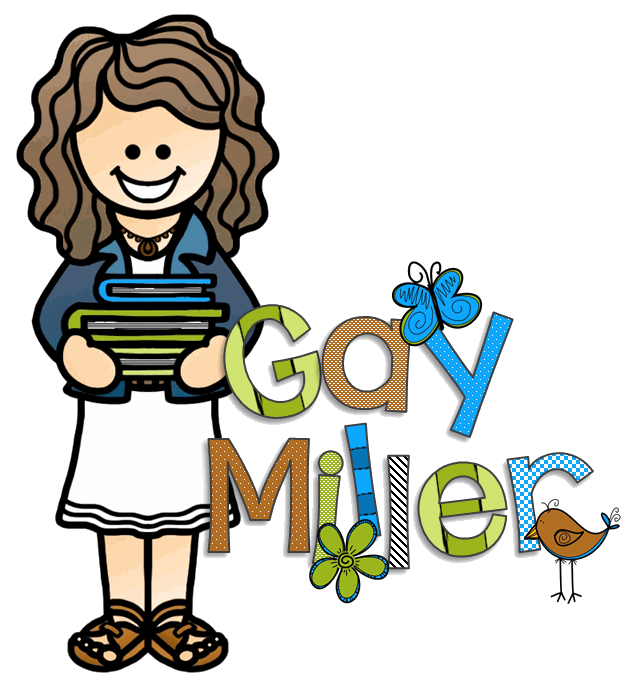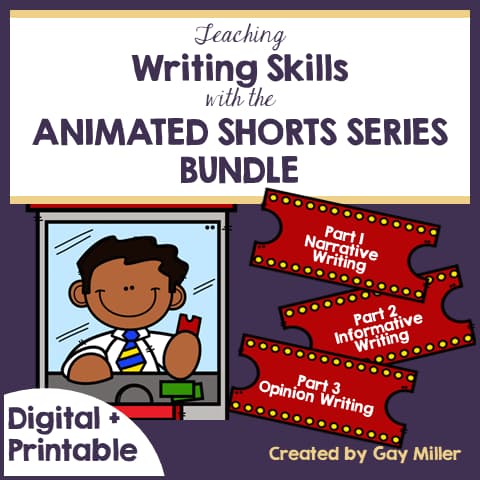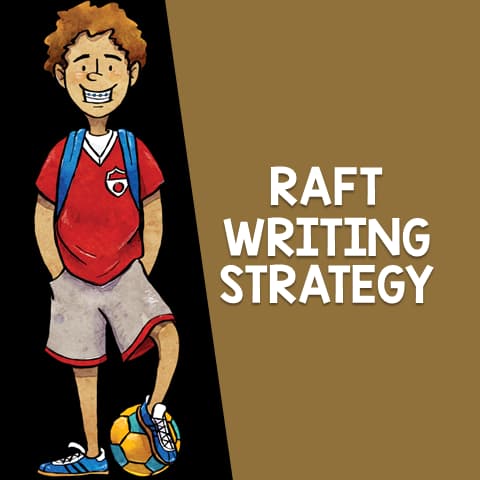
Getting students to write with purpose, voice, and a clear sense of audience can be challenging. That’s where the RAFT writing strategy comes in. It’s your secret weapon for turning “What do I write?” into “I’ve got this!”
Lesson Handout
This handout includes all the RAFT examples in student-ready format. Just print and teach.
What is RAFT?
RAFT is a writing strategy that helps students focus on four key areas of communication. This strategy helps students understand and convey information on a given topic. RAFT is an acronym for the following:
Role of the Writer – The role is the perspective. Is the writer the President of the United States, a fifth-grade small-town student, a famous athlete, or any number of people? The role might include animals or inanimate objects such as toys.
Audience – The audience includes any person who will read the writing. This could be a large group, such as a school body, or an individual, such as a school principal.
Format – Writing comes in all formats. Think letter, petition, instructions, television commercial, travel guide, newspaper article, journal entry, speech, and so on.
Topic – The topic is what you will be writing about. This can include endless possibilities.
This strategy is a great way to make writing feel like play rather than a punishment. RAFT encourages students beyond generic five-paragraph essays and into the world of authentic, imaginative writing.
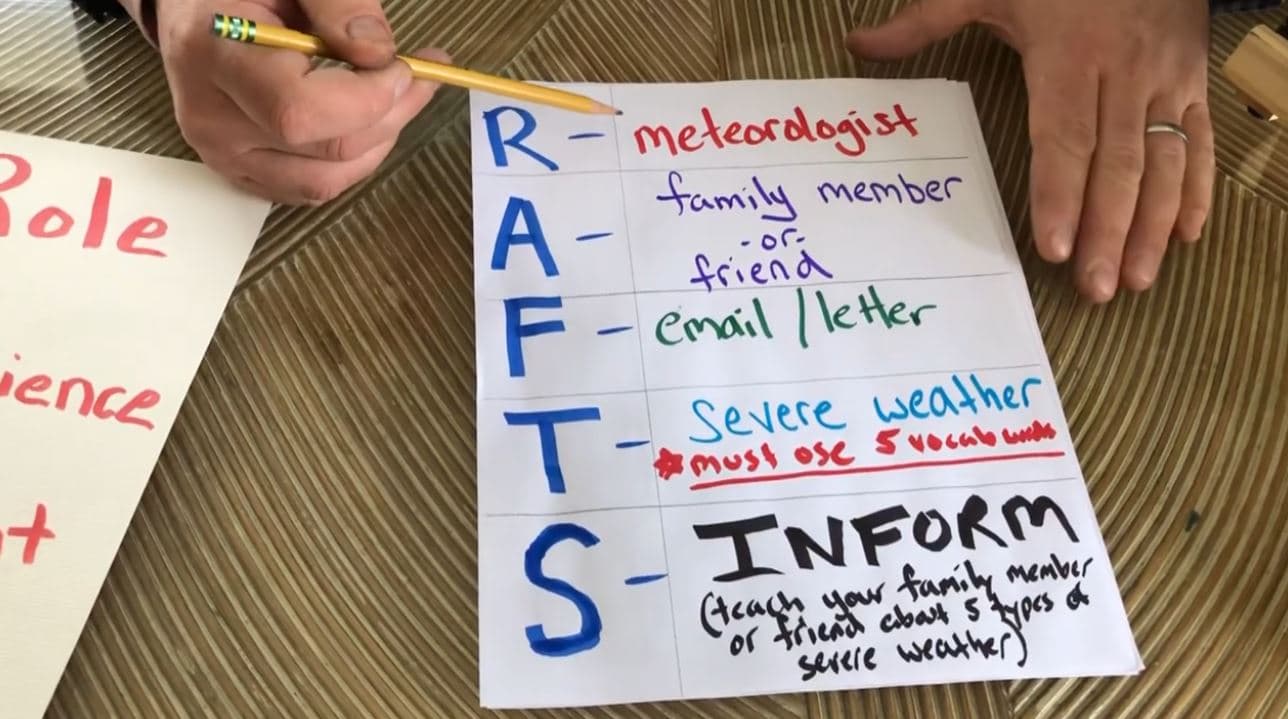
Is this strategy new to you? Check out this two-minute video that provides a great explanation of the strategy.
How RAFT Works: A Quick Example
Students choose (or are assigned) one item from each category.
For example:
Role: Advertiser
Audience: TV Audience
Format: A jingle or slogan for a commercial using onomatopoeia or alliteration
Topic: To encourage consumers to remember and purchase this product.
Or…
Role: Muralist
Audience: People who walk or drive by the downtown buildings in Mountain City
Format: Paint a mural to go on the side of one of the buildings in Mountain City.
Topic: You must create a sign that has alliteration in the shape of the object you are describing.
Seriously, this stuff practically writes itself. (Okay, not really, but the kids think it’s more fun than the usual “write a paragraph about your weekend.”)
RAFT in Action
Here are just a few ways you can use RAFT in your classroom:
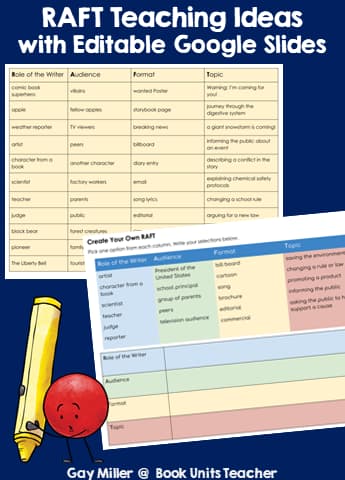
📚 In ELA
This example works well for a lesson on sound devices. Students will enjoy learning about onomatopoeia and alliteration when art is included.
Example:
Role: Marketing
Audience: 9 to 12 Year Old Consumers
Format: Packaging for a Product
Topic: You want to encourage consumers to buy your product by using either onomatopoeia or alliteration.
🗺️ In Social Studies
Turn historical figures or events into engaging first-person narratives.
Example:
Role: The Liberty Bell
Audience: Tourists
Format: Brochure
Topic: My life and cracks
More Examples
| Role | Audience | Format | Topic |
|---|---|---|---|
| artist | peers | billboard | informing the public about an event |
| character from a book | another character | diary entry | describing a conflict in the story |
| scientist | factory workers | explaining chemical safety protocols | |
| teacher | parents | song lyrics | changing a school rule |
| judge | public | editorial | arguing for a new law |
| black bear | forest creatures | sign | warning about acid rain |
| pioneer | family back home | journal entry | hardships of traveling west |
| apple | fellow apples | storybook page | journey through the digestive system |
RAFT Video Lesson – Alliteration in Advertising
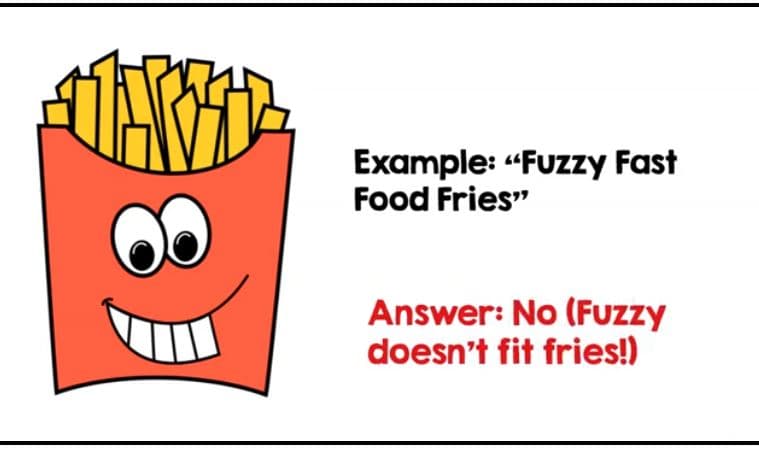
Since RAFT focuses on role, audience, format, and topic, it’s a perfect fit for teaching persuasive language techniques. One powerful tool advertisers use is alliteration, which occurs when words begin with the same sound, making slogans catchy and memorable.
I’ve created a short video lesson that walks students through the process of writing their own alliterative ad slogans. In the video, students will:
- complete a cloze definition of alliteration
- learn four quick rules for creating strong slogans
- analyze both real and made-up ad examples
- write their own slogan in RAFT style:
Role: Advertiser – Audience: Consumers – Format: Slogan – Topic: Your product
This activity works beautifully with RAFT because it highlights voice and audience. Students quickly see how word choice affects tone, and they’ll love creating fun, tongue-twister-style slogans for their chosen product.
Why Teachers Love RAFT





RAFT gives students a voice and sparks creativity. The structured planning it provides helps students organize their ideas before writing—a win for everyone, especially the one doing the grading.
Differentiation Ideas
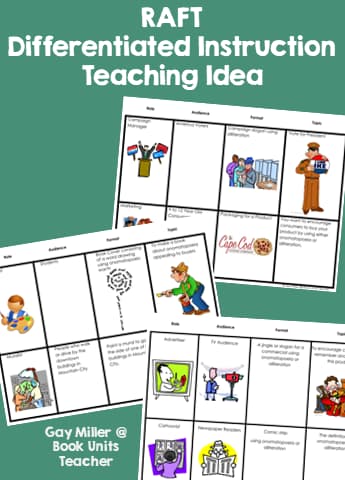
The best part of the RAFT experience is the ease with which instruction can be differentiated. For example, I placed students into three groups. Each group was given two choices of activities.
- Group 1 created drawings and posters to show understanding.
- The second group wrote creative journal entries or dialogues.
- This group tackled more complex formats like slogans or editorials.
The activities varied in difficulty, ranging from the easiest level, which mainly consisted of drawing activities, to the most difficult, which involved creating a slogan for advertising or a comic strip.
Everyone was challenged, but no one felt overwhelmed. The best part? Students were so engaged they didn’t even notice they were practicing writing skills.
Try RAFT in Your Classroom
Ready to jump in? I’ve created a free editable Google Slides set that includes ready-to-use RAFT activity boards. They’re perfect for print or digital learning and great for centers, early finishers, or whole-class projects.
The RAFT writing strategy is more than just a fun acronym—it’s a powerful way to deepen students’ understanding of voice, audience, and genre. Whether you use it once a quarter or every Friday, it will get your students writing with purpose—and maybe even enjoying it.
And hey, any strategy that lets a student pretend to be a burrito writing a love letter to a taco? That’s a win in my book.
You Might Also Like
See the product that inspired this post.
Are you looking for a fun way to teach writing skills? This series teaches narrative, informative, and opinion writing with animated short films your students are sure to love!
